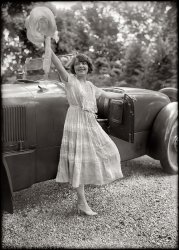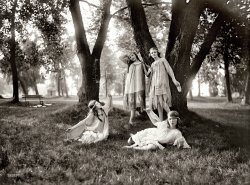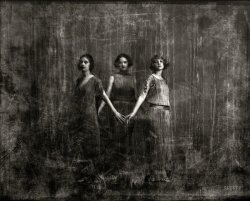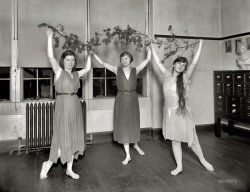
MAY CONTAIN NUTS

Search Shorpy
SHORPY ART

Framed or unframed, desk size to sofa size, printed by us in Arizona and Alabama since 2007. Explore now.
Join and Share
Ad-Free Shorpy
Shorpy is funded by you. Patreon contributors get an ad-free experience.
Learn more.

Recent comments
- Lofty addition
- In 1912
- Keenan Building
- Six years old
- Taken from the P.J. McArdle Roadway?
- It stood only 47 years
- Three track mind
- Incline to the right
- Reach for the sky, 1912 style
- No clean sweep
- Same Job Title, Same Face
- Sadly Lost
- Beautiful ...
- Where you get your kicks
- Aim High
- Pueblo Revival sisters
- Pueblo Neoclassicism
- Milk Man
- Regional dialect.
- Spielberg's inspiration
- Great Photo
- Loaf Story
- Do you still have the Rakes category?
- Could almost be a scene from the 1957 movie 'Hell Drivers'
- The Wages of Fear.
- Conspicuous by their absence
- Got Milk?
- All that aluminum
- No lefties
- Smoke 'em if you've got 'em
Member Photos
The Shorpy
Print Emporium
Print Emporium
Search Shorpy
Search results -- 30 results per page
- In My Back Yard: 1929
- ... circa 1929. "Unidentified women, possibly Elizabeth Duncan dancers." 4x5 nitrate negative by Arnold Genthe. View full size.
... is as relevant now as it was nearly a century ago!
Isadora? Shouldn't that be Isadora Duncan?
[Not when referring to her ... Posted by Dave - 01/09/2015 - 4:12pm -
![In My Back Yard: 1929 Long Island or Connecticut circa 1929. "Unidentified women, possibly Elizabeth Duncan dancers." 4x5 nitrate negative by Arnold Genthe. View full size.
Again??Time to call Orkin.
It Happened to Us!Our back yard has a big lawn surrounded by a small woods, making it feel quite pastoral. Once, our church filmed some interpretive dancers doing their bit back there. So, this picture is as relevant now as it was nearly a century ago!
Isadora?Shouldn't that be Isadora Duncan?
[Not when referring to her sister Elizabeth. -tterrace]
EtherealI love this photo! Reminiscent of the calm, less complex time, before our current high tech intensity.
Why, umm, no. "Does this gauzy dress-like garment with the rubber band thingy situated awkwardly beneath my posterior make me look fat?"
I can't define "diaphanousness"But I know it when I see it.
(The Gallery, Arnold Genthe, Dance)](https://www.shorpy.com/files/images/SHORPY-7a02625a1.thumbnail.jpg)
- Hats Off: 1920
- ... View full size. George Grantham Bain Collection.
Isadora This reminds me of Isadora Duncan shortly before she got done in by her scarf.
Shoes. Ahhmazinggg. ... Posted by Dave - 07/24/2012 - 9:45pm -

- Her First Kissel: 1922
- ... Golden Gate Park." The driver evidently an understudy for Isadora Duncan. 5x7 glass negative. View full size.
Isadora Lite Evidently ... Posted by Dave - 11/11/2016 - 12:36pm -
![Her First Kissel: 1922 San Francisco circa 1922. "Kissel Tourster at Golden Gate Park." The driver evidently an understudy for Isadora Duncan. 5x7 glass negative. View full size.
Isadora LiteEvidently one must work up gradually to the full-throttle version.
She's a beauty, the car that is, and is presently represented by one surviving example per KisselKar Klub. It’s a 1921 Kissel Model 6-45 Sport Tourster. Kissels were produced in Hartford, Wisconsin and were known for their high quality. The factory building is still with us, having housed the Chrysler outboard motor operation and the Bayliner boat company, among other enterprises. Could that be the understudy’s scarf hanging out the door?
[Hence the gag ... so to speak. -tterrace]
(The Gallery, Cars, Trucks, Buses, Chris Helin, San Francisco)](https://www.shorpy.com/files/images/SHORPY-1058A.thumbnail.jpg)
- Approach With Caution: 1919
- ... to Jim Page for informing us "Here we see a 1918 Peerless Isadora-model Pinchmaster 3000 truck". "Pinchmaster", could there be a more ...
[Jim did make that up. The reference to Isadora Duncan was especially sly. - Dave]
Original power washer Belt driven ... Posted by Dave - 09/29/2014 - 9:43am -
![Approach With Caution: 1919 San Francisco City Hall circa 1919. "Peerless truck." Three young ladies aboard what seems to be some sort of street-cleaning, finger-ripping machine. Hide your children and stand clear! 5x7 glass negative by Christopher Helin. View full size.
FrighteningThe single most dangerous street machine I have ever seen.
Before Rosie the RiveterI love showing people these sorts of images, in light of the fact that most of our images of American Women in Action come from the WWII era, where they were pressed into service because men had gone to war. These ladies, in 1919, look like they just ... have jobs. I love the proto-Rosie coveralls and headscarves, the likes which show up again a scant fifteen years later as something unusual in "The Saturday Evening Post" and LIFE magazines.
Crazy Contraptions I think if Rube Goldberg had ever designed a truck, it would look just like that.
Finger ripping is putting it mildy.That truck looks as if it was designed to inflict injury. I hope those women got hazardous duty pay.
AwesomeI just stumbled upon this site. I love vintage photos, and this one is terrific -- who knew that there were women filling roles like this in the early 20th Century?
Safety guards ! Safety guards!We don't need no steenking safety guards!
GoldbergianIn 1904, freshly minted from the UC-Berkeley Engineering School, Rube Goldberg took a job with the San Francisco Department of Water and Sewers. Although he left in a few months to be a cartoonist for the SF Chronicle, it appears he kept his hand in by designing machines for the Department.
More Danger LurkingAnd if you do get passed the hair pulling - finger ripping apparatus, there's always that two foot section of lead pipe on the floor to worry about.
Tot-TwirlerWhen I see gear like this, I'm just going to start labeling it "babyshredder."
The third operator was necessary for when the first two inevitably got caught in the machinery.
Count your fingersI trust those open belt and chain drives are OSHA approved. But I bet it was more interesting when you could see the parts of machinery doing their thing.
Pilot for short subject seriesI believe this is a still from "The Three Stoogettes", an unsold movie short series which was way ahead of its time -- "We'll clean your sheets, we'll clean your streets, in half the time, no more grime ... zots!"
PeerlessI infer that to mean returning from the job with fewer of one's peers in the passenger seat than one left with that morning.
Hey HoneyThis truck looks a heck of a lot like a "honey dipper" to me. Other than the 1919 running gear and mechanism, they still look like that today.
[Like our previous street flusher, this rig was one of many deployed as a public-health measure during the flu epidemic of 1918-1920 to control dust. - Dave]
WowserDefinitely high tech for its day. The belt drives appear to be increasing the speed to a (pump?) under the end of the tank. I can't see any spray nozzles so I would assume it's used to refill the tank?
Street Cleaner??It looks more like the kind of equipment that would be used to spread liquid asphalt (aka tar) on a roadway before spreading a layer of stone on it. Admittedly, it's very clean, so this might have been a publicity shot for the manunfacturers. "So simple the ladies can operate it!"
You can't make this upThanks to Jim Page for informing us "Here we see a 1918 Peerless Isadora-model Pinchmaster 3000 truck". "Pinchmaster", could there be a more appropriate name of it than that?
[Jim did make that up. The reference to Isadora Duncan was especially sly. - Dave]
Original power washerBelt driven PTO runs the rear mounted pump. Two control levers by the closest operator regulate how much flow is produced to swish the road apples to the gutter.
Vehicle IDI usually allow others to handle the vehicle ID chores here at Shorpy, but since no one has stepped up: Here we see a 1918 Peerless Isadora-model Pinchmaster 3000 truck. Few were made, as this model required a three-person crew, and the replacement 1919 Peerless Fargo-model Chopmaster 4000 only required a crew of two-and-a-half (two in a pinch).
The three P'sPeerless, Packard and Pierce Arrow were makers of some of the best cars and trucks of their era. Chain drive has its advantages: (1) less unsprung weight; (2) ease of gear ratio change; (3) lack of rear wheel spin in soft ground; (4) great sound going down the road.
CrewThe third crew member is the flight engineer.
Unsightly Limbs and Appendages...Removed While You Wait! Just step a little closer, please.
(The Gallery, Cars, Trucks, Buses, Chris Helin, San Francisco)](https://www.shorpy.com/files/images/SHORPY-GN-006A.thumbnail.jpg)
- Sisters of the Sun: 1929
- ... Circa 1929. "Unidentified women, possibly Elizabeth Duncan dancers." The gauzy harbingers of Spring. 4x5 nitrate negative by Arnold ... hearing.
Caption? I wonder if the captioner meant Isadora Duncan dancers. Isadora died in 1927, but her spirit still flits across ... Posted by Dave - 01/06/2014 - 2:50pm -
![Sisters of the Sun: 1929 Circa 1929. "Unidentified women, possibly Elizabeth Duncan dancers." The gauzy harbingers of Spring. 4x5 nitrate negative by Arnold Genthe. View full size.
ListenIf only we could hear the music they are hearing.
Caption?I wonder if the captioner meant Isadora Duncan dancers. Isadora died in 1927, but her spirit still flits across the landscape.
[Elizabeth Duncan was a dance instructor and Isadora's older sister. -tterrace]
Si-reensThese may be the Sirens from "O Brother, Where Art Thou?" practicing up for their next victims.
Middle Is MostestWell, I'm a senior citizen but too young to have met the lady in the middle. But in 1965 as a teen Marine, Great Uncle Ed told me that there were beautiful women in his day and some of them were even born in the 19th century.
(The Gallery, Arnold Genthe, Dance)](https://www.shorpy.com/files/images/SHORPY_7a02626u.thumbnail.jpg)
- Wood Nymphs: 1924
- ... in such frolics in the park were often thinking of one Isadora Duncan, although the expressions we see on these proto-hippies suggest some are ... Posted by Dave - 08/20/2013 - 3:18pm -

- Isadorable: 1921
- ... Beach, Long Island, New York, circa 1921. "Anna (Denzel) Duncan dancing." One of the "Isadorables," as Isadora Duncan's German proteges were known. Glass transparency by Arnold ... Posted by Dave - 01/03/2016 - 1:11pm -
![Isadorable: 1921 Long Beach, Long Island, New York, circa 1921. "Anna (Denzel) Duncan dancing." One of the "Isadorables," as Isadora Duncan's German proteges were known. Glass transparency by Arnold Genthe. View full size.
Call the Swimsuit PoliceShe's showing leg all the way to the ground!
[Not to mention the other direction. - Dave]
Karate KidAll that's missing is a pier timber.
Aaaack! Something touched my foot!
Post processing.Looks like a bit of re-touching has been applied, thankfully.
Never Turn Your Back On the SurfBut sideways is okay if you have excellent peripheral vision.
Later. in the New Yorker...Tell me Thurber never saw that picture!
(The Gallery, Arnold Genthe, Dance)](https://www.shorpy.com/files/images/7a09879u1.thumbnail.jpg)
- Chiaroscuro: 1920
- ... Come plié with us!
New York circa 1920. "Isadora Duncan dancers." Nitrate negative by the Prussian- born American photographer ... Posted by Dave - 10/07/2013 - 10:57am -

- Loose-Limbed: 1919
- ... Collection glass negative.
Dance fever... If Isadora Duncan had ever been commissioned to create camouflage for the military, I ... Posted by Dave - 10/07/2013 - 10:59am -

- Rites of Spring: 1927
- ... their efforts.
The founder of the style was of course Isadora Duncan, who met an ignominious end in the year of this photo when one of her ... Posted by Dave - 08/06/2013 - 7:48pm -
![Rites of Spring: 1927 Washington, D.C., circa 1927. "Cherry blossoms -- dancers at Tidal Basin." Ethereally moldy. Harris & Ewing Collection glass negative. View full size.
Whoops, dammitNote to self: Store the cases for the camera gear behind the camera, not in the scene. Next time.
Looks surrealI love the effect the mold gives the image. Makes it look almost like a high key image. Such a contrast to the way the girls are dressed compared to the rather stuffy looking onlookers.
SpectacularSometimes a Shorpy photo just stands out as something special. For me, this is one of those photos.
Scarf dancingThere was quite a bit of this terpsichore going on throughout the 20's and even earlier. The chief ingredient was at least one or more fetching young persons scantily clad in diaphanous, scarf-like garments such as could be imagined to invoke classic Greece. The presentations differed very little in terms of dance style, the main distinction between various groups being the amount of undergarments worn. It was all about beauty and freedom and liberation, and I congratulate them all for their efforts.
The founder of the style was of course Isadora Duncan, who met an ignominious end in the year of this photo when one of her famous flowing scarves became entangled both around her neck and the wheel of an automobile.
A Murder of Crowsdescribes the non-diaphanously black-clothed onlookers, who have gathered to observe what must have been a spontaneous (and oh-so-titillating) photo shoot. Love the dancer's street shoes strewn almost carelessly on the slope nearby, contrasting with the bags set down neatly in a row. Pretty cool.
[The somber onlookers strike me as Goreyesque. -Dave]
Cool dancersJudging by the attire on the onlookers, this must have been a very chilly day to be dressed as lightly as the lovely dancers are! It looks like they had just barely removed their outerwear and kicked their shoes off before assuming that pose!
Movement 101Sorry, but all that comes to my mind when I see such stilted, soporific scenes is Eulalie Mackechnie Shinn and company busting their studiously aesthetic moves in "The Music Man."
(The Gallery, D.C., Harris + Ewing, Pretty Girls)](https://www.shorpy.com/files/images/SHORPY_34016a.thumbnail.jpg)
- Musical Family: c. 1902
- ... Walter Damrosch, playing for stars that included dancer Isadora Duncan.
He joined the Foreign Department of the Victor Talking Machine ... Posted by Mike-76NYSV - 09/20/2011 - 12:35am -
![Musical Family: c. 1902 This picture shows three members of the Shilkret family - Jack, his father Wulf (William) and brother Harry - probably around 1902. Jack, my grandfather, was born in 1896, and he appears to be about six in this photo, hence the date. He was an orchestra leader in the 20's through the 40's, and had several radio shows during the 30's. He composed popular songs and, among other things, did the background music for a number of the Fitzpatrick Travel Talks ("as the sun sinks slowly in the west..."). In addition to his work under his own name, Jack and Uncle Harry both recorded many records with their older brother Nat's RCA Victor orchestra, with Jack on piano and Harry on trumpet. View full size.
Amazing family talent !!
Nathaniel Shilkret (25 December 1889 – 18 February 1982) was born in New York, to an Austrian immigrant family. He was an American composer, conductor, clarinetist, pianist, business executive (A&R man), and music director (Victor, RKO and MGM).
He was a child prodigy, touring the country with the New York Boys' Orchestra from the ages of seven to thirteen as their clarinet soloist. From his late teens to mid-twenties he was a clarinetist in the best New York music organizations, including the New York Philharmonic Society (under Vassily Safanov and Gustav Mahler), the New York Symphony Orchestra, the Metropolitan Opera House Orchestra, the Russian Symphony Orchestra, Victor Herbert's Orchestra, Arnold Volpe's Orchestra, Sousa's Grand Concert Band, Arthur Pryor's Band, and Edwin Franko Goldman's Band. He was also a rehearsal pianist for Walter Damrosch, playing for stars that included dancer Isadora Duncan.
He joined the Foreign Department of the Victor Talking Machine Company (later to become RCA Victor) around 1915, and soon was made manager of the department. In 1926 he became "director of light music." He made many thousands of recordings, possibly more than anyone in recording history. His son Arthur estimated the sales of these records was of the order of 50 million copies. He was the conductor of choice for many of Victor's innovative recordings. He conducted the first record made by the "electric method," the first commercial Victor LP (in 1931!) and was the first conductor to successfully dub an electrically recorded orchestra background over the recordings of Enrico Caruso, Victor's star artist, who died before the vastly superior electrical recording method was developed. He conducted the orchestra for the premiere recording of George Gershwin's symphonic poem An American in Paris, in 1929. This recording was one of five recordings conducted by Nathaniel Shilkret that eventually earned Grammy Awards.
Radio and the recording studio
He was also one of radio's earliest stars, estimating that he made over 3000 broadcasts between 1925 and 1941, including being the conductor for The Eveready Hour, regarded as the first major commercial broadcast and the first major variety show. His sponsors included Camel, Carnation, Chesterfield, Esso (now Exxon), Eveready, General Electric, General Motors, Hires Root Beer, Knickerbocker, Lysol, Maxwell House, Mobil Oil, Palmolive, RCA Victor, Salada tea and Smith Brothers' Cough Drops.
Between his conducting for records and for radio, virtually every musical star of the day performed under the baton of Nathaniel Shilkret. His orchestra members included Jimmy Dorsey, Tommy Dorsey, Benny Goodman, Lionel Hampton, Glenn Miller, Artie Shaw, Mike Mosiello and Del Staigers. George Gershwin, Jascha Heifetz, Mischa Elman and Andrés Segovia all played under his direction. Opera stars Rose Bampton, Lucrezia Bori, Feodor Chaliapin, Jon Crain, Richard Crooks, Miguel Fleta, Emilio de Gogorza, Amelita Galli-Curci, Mary Garden, Beniamino Gigli, Helen Jepson, Maria Jeritza, Giovanni Martinelli, Nino Martini, John McCormack, James Melton, Grace Moore, Jan Peerce, Lily Pons, Rosa Ponselle, Elisabeth Rethberg, Gladys Rice, Tito Schipa, Gladys Swarthout, John Charles Thomas, and Lawrence Tibbett were all conducted by Nathaniel Shilkret. The lists of popular singers and foreign artists that played under his direction are just as impressive.
[edit] Compositions
African Serenade, a 1930 issue of a Nat Shilkret composition recorded by his own band.
He composed and arranged thousands of pieces. His best-known popular composition was The Lonesome Road, first sung by co-writer Gene Austin and later by Jules Bledsoe (dubbing Stepin Fetchit) in the final scene of the 1929 part-talkie film version of Show Boat and recorded by more than one hundred artists, including Louis Armstrong, Bing Crosby, Frank Sinatra and Paul Robeson. His composition Jeannine, I Dream of Lilac Time sold almost two million copies of sheet music and was also recorded by over a hundred top artists, including Louis Armstrong, Skitch Henderson, Guy Lombardo, The London Philharmonic Orchestra, John McCormack, Mitch Miller, Hugo Montenegro, The Platters, and Lawrence Welk. His composition Concerto for Trombone was premiered in 1945 by Tommy Dorsey, playing with the New York Symphony Orchestra, under the direction of Leopold Stokowski. The piece was unavailable to the public from the mid-1950s until Scottish trombonist Bryan Free rescued it from anonymity in the beginning of this century. It was re-premiered at Carnegie Hall by the New York Pops, under the direction of Skitch Henderson, with Jim Pugh as soloist. Since its revival, the Concerto for Trombone has been performed about forty times (with more performances scheduled) in the United States, Canada and several European countries.
Later career
Shilkret moved to Los Angeles in 1935 and there contributed music scores and musical direction for a string of Hollywood films for RKO (as musical director from 1935--1937) and MGM (as a musical director from 1942--1946). His films included Mary of Scotland (1936), Swing Time (1936), The Plough and the Stars, and Shall We Dance? (1937) and several films of Laurel and Hardy. He also received an Oscar nomination for his work scoring the film version of Maxwell Anderson's stage drama Winterset (1936).
In 1939, he conducted a group of soloists (including tenor Jan Peerce) and the Victor Symphony Orchestra for RCA Victor's multi-disc tribute to Victor Herbert, which were recorded following a special NBC radio broadcast, and he recorded a number of other albums in 1939 and 1940. Due to a serious abdominal operation for cancer removal, he did not conduct for most of 1941.
He worked at RKO-Pathe, making short films from 1946 through the mid-1950s. He was the pit orchestra conductor for the Broadway show Paris '90 in 1952. He lived in his son's home in Franklin Square, NY, from the mid-1950s until his death in 1982.
He was part of a very musically inclined family. His father played almost every instrument, and made certain that Nat and his three brothers were all accomplished musicians at an early age. Older brother Lew Shilkret was a fine pianist, but also worked in the insurance industry. Younger brother Jack Shilkret has a career that paralleled Nathaniel's career: he played clarinet and piano, recorded extensively, and conducted and played piano on the radio and in motion pictures. The youngest brother Harry Shilkret was a medical doctor, who worked his way through school playing trumpet, and continued to play trumpet frequently in Nathaniel's orchestras, particularly for radio broadcasts, long after he was a practicing allergist. Nathaniel Shilkret's brother-in-law, Nathaniel Finston, was violinist in many organizations in his youth and was musical director for Paramount and later for MGM, at one time being Nathaniel Shilkret's boss.
(ShorpyBlog, Member Gallery)](https://www.shorpy.com/files/images/JackWulfHarryShilkret.thumbnail.jpg)























